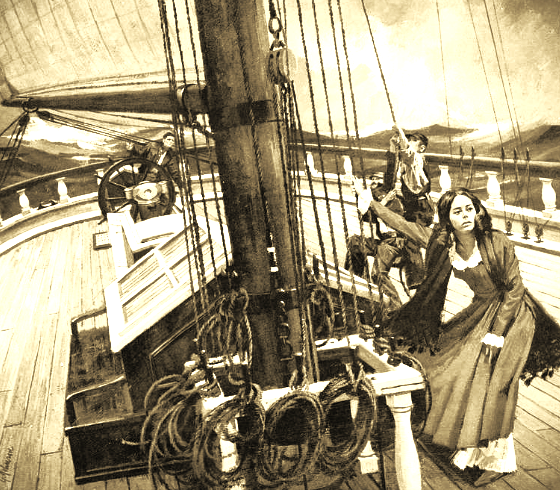
Rostand Medeiros – https://pt.wikipedia.org/wiki/Rostand_Medeiros
As aventuras e épicos no mar sempre despertaram o interesse geral, e este é um fascínio muito antigo. Quase sempre vale a pena ler narrativas sobre os elementos da natureza marítima. Mas normalmente, os protagonistas desses feitos incríveis são homens.
E se uma mulher fosse protagonista de uma história marítima genuína e emocionante, os seus feitos seriam igualmente apreciados na sociedade atual?
Não me parece!
Para minha surpresa, esta mulher notável, com uma incrível história de sobrevivência no mar, está em grande parte esquecida no seu próprio país. E é um país conhecido por valorizar muito a sua própria história.

E olha que na época dos acontecimentos ela tinha apenas 19 anos e estava grávida do primeiro filho. Mas isso não a impediu de assumir o cargo de capitã de um grande veleiro depois que seu marido, o capitão, ficou gravemente doente. Ela fez isso em meio às tempestades traiçoeiras do Cabo Horn e da Passagem de Drake, que incluíram temperaturas extremamente baixas, ondas gigantes, ventos com força de furacão e muitos outros desafios. Ela também enfrentou um primeiro oficial tirânico e uma tripulação que tentou se amotinar. Porém, ela superou o cansaço, o medo e a dor e conseguiu chegar ao seu destino.
Esta é a sua história!
Uma Mulher do Mar
No nordeste dos Estados Unidos, no estado de Massachusetts, fica a grande cidade de Boston. Mesmo à sua frente está a cidade de Chelsea, um local que desde os seus primórdios tem uma forte ligação com o oceano. Em meados do século XIX, Chelsea desenvolveu-se como um importante centro industrial para a construção de veleiros, estabelecendo-se como uma potência neste setor nos Estados Unidos. Isso fez com que a cidade atraísse trabalhadores qualificados de todo o país e do mundo. E foi nesta cidade que, nas primeiras décadas do século XIX, chegou o casal inglês George e Elizabeth Brown.
George era um marinheiro profissional, com muitos anos de experiência no mar. Na nova cidade, rapidamente se envolveu em atividades marítimas. Elizabeth, como era costume no século XIX, tinha como único objetivo da sua vida cuidar da sua casa e dos seus filhos. Ainda mais por ser esposa de um marinheiro, que ficava frequentemente fora de casa, às vezes por anos.
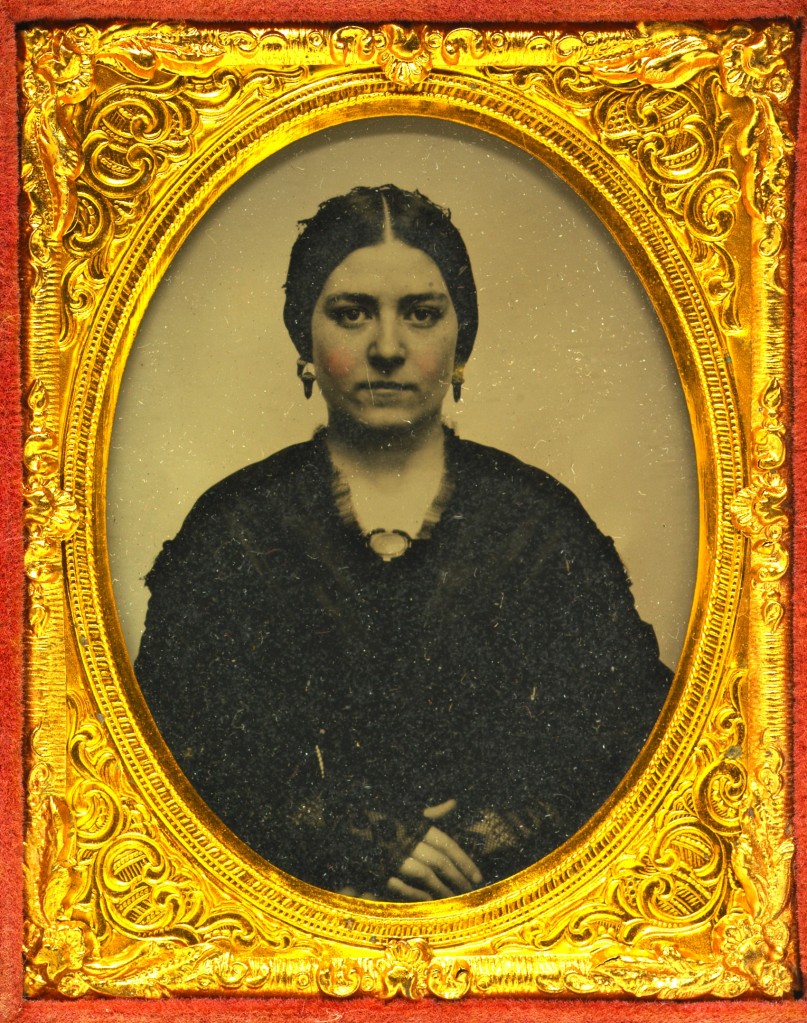
Mas estas ausências não impediram George e Elizabeth de criarem uma família numerosa, cujos filhos estavam ligados ao mar. Nesta época, não foi surpresa que Mary Ann Brown, nascida em 1837, se casasse aos 16 anos com Joshua Patten, um encantador capitão do mar nove anos mais velho que ela. Mary Ann foi descrita como uma bela jovem com traços atraentes, modos refinados e graciosos, uma figura esbelta e pequena, longos cabelos escuros e olhos castanhos vibrantes.
Joshua trabalhou no comando de veleiros, transportando cargas e passageiros de Nova York a Boston. Mas ele era uma estrela em ascensão entre os capitães de navios, por isso não foi surpresa quando lhe foi oferecido o comando de um elegante e poderoso Clipper.
Este tipo de navio surgiu à medida que o comércio e a economia global se expandiam. Basicamente, era um tipo de veleiro de carregamento rápido que se originou nos Estados Unidos e teve seu apogeu em meados do século XIX. As características mais marcantes do navio eram a proa bem cortada, a largura estreita em relação ao comprimento e as altas velocidades alcançáveis. Esses recursos resultaram em espaço de carga limitado em favor da velocidade. Os mastros, postes e estruturas eram relativamente grandes, e velas adicionais a favor do vento eram frequentemente usadas. Este tipo de embarcação requer um grande número de tripulantes e comandantes experientes e bem preparados. Joshua Patten foi um deles!
Uma Mulher a Bordo

Ele recebeu um veleiro pesando mais de 1.600 toneladas, com velas enormes, e batizado de Neptune’s Car (Carro de Netuno).
Este navio foi lançado em 16 de abril de 1853, no estaleiro Page & Allen Company, na cidade de Portsmouth, Virgínia. Posteriormente, foi adquirida pela empresa de transportes Foster & Nickerson’s Line de Nova York. Em sua época, o Neptune’s Car era considerado um barco longo e elegante. Tinha 68 metros de comprimento, boca de 12 metros e capacidade para transportar 1.616 toneladas de carga. Ela tinha três mastros altos e carregava 25 velas, a maior das quais tinha aproximadamente 21 metros de diâmetro. Um verdadeiro colosso do seu tempo.
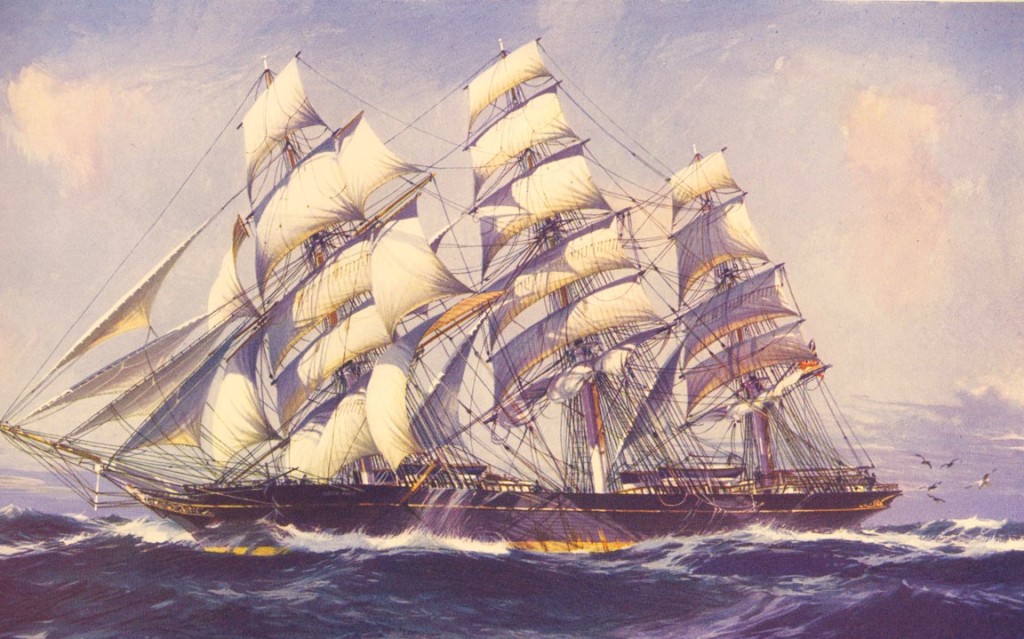
Entre os principais destinos alcançados pelos velozes Clippers estava a cidade norte-americana de São Francisco, na costa oeste dos Estados Unidos. O problema era que, antes do Canal do Panamá, a única forma de chegar lá por mar era partir de um porto da costa leste, sendo Nova York o principal, e navegar para sul ao longo de toda a costa da América do Norte. E pelo sul, atravessando o traiçoeiro Cabo Horn e a Passagem de Drake, entrando no Oceano Pacífico, depois traçando todo o litoral sul-americano em direção ao norte, passando pela costa do México, e finalmente chegando a São Francisco. Uma viagem com duração de quatro meses e aproximadamente 24 mil quilômetros. Apesar dos desafios e obstáculos, esta rota desempenhou um papel crucial no apoio à economia em expansão impulsionada pela mineração de ouro na Califórnia. As empresas de transporte marítimo obteriam enormes lucros entregando prontamente alimentos e suprimentos para a área.
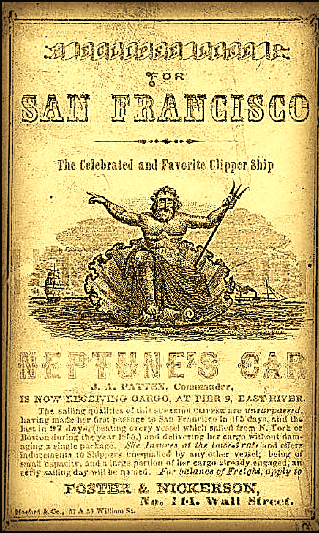
O Neptune’s Car completou com sucesso sua primeira viagem entre Nova York e São Francisco, com a navegação provando ser um sucesso. Porém, o relacionamento entre a tripulação deixou a desejar. Entre os problemas ocorridos com o comandante e a tripulação, não faltaram ameaças de motim. O capitão avisou que atiraria em qualquer um que ousasse concretizar tal ideia. Evidentemente, todos a bordo foram para a rua e Joshua Patten foi chamado para assumir o comando.
Logo, Lady Mary Ann Brown Patten insistiu em se juntar ao marido em sua primeira viagem como capitão do Neptune’s Car. Ela teve uma oportunidade que poucas mulheres de sua época teriam: conhecer o mundo a bordo de um navio.
Eles viajaram para o extremo sul do continente americano e entraram no Oceano Pacífico antes de chegarem a São Francisco. Desta cidade surgiu um novo trabalho de transporte de cargas, e eles seguiram para Xangai, na China, onde embarcaram uma grande quantidade de chá com destino a Londres, na Inglaterra. Eles retornaram ao Oceano Atlântico navegando pelo traiçoeiro Cabo Horn a caminho de seu destino. Eles passaram vários meses juntos no mar antes de retornarem para Nova York, Boston e Chelsea.
Embora as mulheres tripulantes de navios fossem muito raras naquela época, não era incomum que as esposas dos comandantes estivessem presentes nos navios de carga. Nos jornais do século XIX, era comum encontrar notícias no site da Biblioteca Nacional sobre navios ancorados no porto do Rio de Janeiro. Essas matérias mencionavam o nome do navio, a tonelagem, a carga, o capitão, os tripulantes e ainda destacavam a presença da esposa do comandante, que os jornais frequentemente elogiavam.
Normalmente, durante a navegação, as esposas desses oficiais permaneciam em suas cabines, realizando atividades como ler, tricotar ou tocar algum instrumento musical próprio de senhoras modestas. Ocasionalmente, elas saíam para tomar um pouco de ar fresco e acompanhavam seus maridos em caminhadas tranquilas pelos portos de destino. Mas para Mary Ann Potter, permanecer a bordo seria diferente.

Ela não queria ser apenas a “esposa do capitão”. Ela estava determinada a ser útil e aprender tudo o que pudesse para ajudar o marido a bordo do Neptune’s Car.
Diz-se que Mary Ann passava o tempo pesquisando na pequena biblioteca do navio, lendo sobre a medicina rudimentar de sua época e ajudando os marinheiros com suas doenças. Joshua, por sua vez, ajudou sua esposa em sua busca por conhecimento, ensinando-lhe os conceitos básicos de navegação, meteorologia, cordas, velas e outras funções dos marinheiros. Ele também ensinou sua esposa a navegar usando equipamentos como sextante, bússola, astrolábio e cartas de navegação. Apesar de enfrentar certas limitações financeiras, Mary recebeu o apoio necessário de sua família em Chelsea para receber uma educação excelente. Ela não demonstrou dificuldades em compreender conceitos técnicos complexos.
O que ninguém a bordo do Neptune’s Car tinha ideia era da utilidade futura desses ensinamentos.
E seria um futuro muito problemático!
A Ganância dos Impuros
Em julho de 1856, o Neptune Car estava se preparando para sua segunda viagem com o Capitão Joshua no comando. Mary Ann acompanharia o marido, mas estava grávida do primeiro filho. Só ela e Joshua compartilharam esse segredo. Provavelmente acreditavam que haveria tempo suficiente para viajar de Nova York a São Francisco e que a criança nasceria em Chelsea quando voltassem. Uma ideia um tanto arriscada.
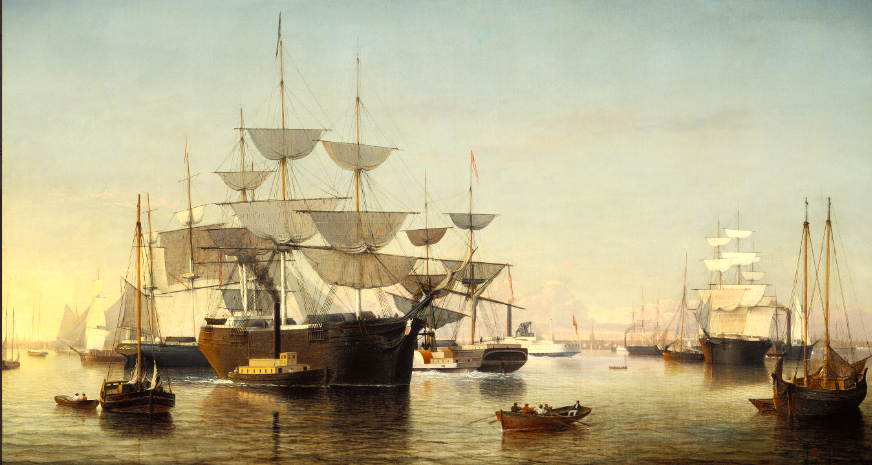
Pois bem, sabemos que naquela época as mulheres eram ensinadas a se considerarem e agirem como o “sexo mais fraco”, e que deveriam sempre se proteger para evitar problemas. Mas acho que Mary Ann faltou àquela aula!
Os problemas logo começaram.
Durante o ataque, houve um acidente e o leal primeiro oficial de Joshua quebrou a perna. Os financiadores Foster & Nickerson, ansiosos por não perder tempo, colocaram um jovem inexperiente chamado William Keeler nesta posição delicada. Algo imprudente, pois depois do comandante, ele era o primeiro oficial que tomava todas as decisões de um navio.
Os problemas continuaram quando Joshua começou a se sentir mal devido a uma doença desconhecida, que só pioraria seu estado mais tarde. Mas Foster & Nickerson, uma dupla de capitalistas ambiciosos e sem coração, desconsideraram a situação difícil do seu empregado e lançaram-no ao mar com Keeler.
O principal motivo de toda essa correria foi que a Foster & Nickerson não queria lucrar apenas com a entrega de cargas. Eles fizeram uma aposta substancial contra os proprietários de outros três navios Clippers que estavam programados para viajar na mesma rota de Nova York a São Francisco, todos partindo simultaneamente. Como o Neptune Car ainda era um navio relativamente novo, eles queriam demonstrar as suas capacidades e garantir que seria o primeiro a chegar ao porto de destino. É verdade que o capitão vencedor poderia ganhar entre US$ 1.000 e US$ 3.000, o que era considerado uma fortuna na época, se completasse a viagem primeiro. Apesar do incentivo, na verdade, a linha Foster & Nickerson seguiu a antiga tradição de indivíduos ricos que estavam dispostos a arriscar a vida de seus funcionários para superar outros indivíduos ricos.
Então eles partiram, e Joshua confiou a Keeler para manter o curso enquanto ele tentava descansar e se recuperar com a ajuda de sua esposa. Mas Keeler provou ser um idiota incompetente em pouco tempo. Sua lista de infrações é impressionante: ele dormiu metade de seus turnos, navegou em recifes de coral, exigiu ordens para tarefas simples e, por fim, recusou-se abertamente a realizar certas tarefas com os marinheiros, como içar velas. Cerca de um mês depois de partir de Nova York, o comandante Joshua trancou-se em sua cabine.
O navio estava no extremo sul e agora enfrentava constantes vendavais de neve e granizo. Nenhum dos outros membros da tripulação foi capaz de realizar a navegação. O segundo oficial era analfabeto e o terceiro era outro idiota que por acaso era amigo de Keeler.
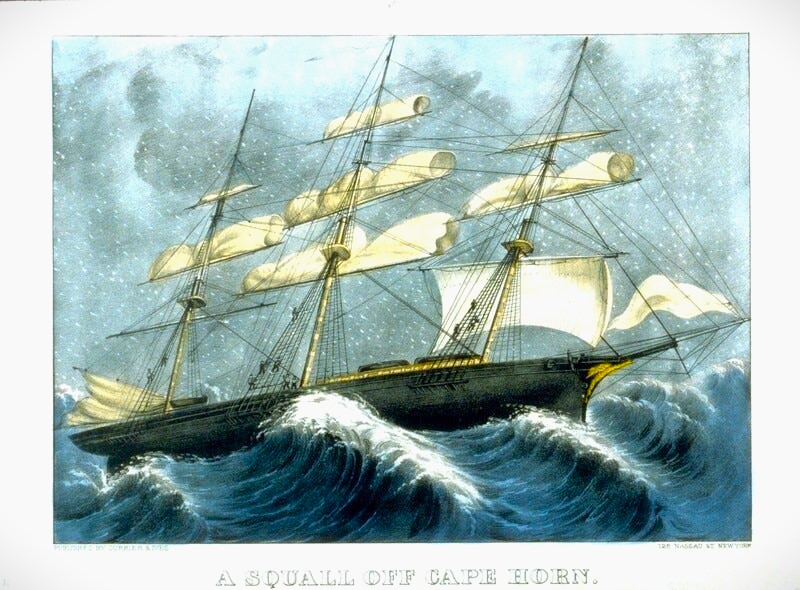
O capitão Joshua teve que ficar acordado dia e noite para manter o curso correto. Por causa disso, ele confiou cada vez mais em Mary Ann para ajudá-lo a confirmar sua posição, curso e velocidade. Ele reconheceu que ela era uma matemática melhor do que ele. Quando o grande navio chegou ao Estreito de Le Maire, estreita passagem marítima entre a Ilha dos Estados e o extremo leste da Terra do Fogo, na Argentina, o estado do capitão piorou. Ele teve febre, delirou e acabou incapacitado em sua cabine. Mary Ann então assumiu o comando pela primeira vez.
Se os problemas já eram enormes, para complicar ainda mais, a Mãe Natureza parecia decidida a atacar aquele veleiro com todas as suas forças. No Cabo Horn, o Neptune Car foi sacudido por ondas de quinze metros e ventos que atingiram velocidades de 160 quilômetros por hora. O céu escureceu, transformando-se em uma massa rodopiante de nuvens, vento e chuva. Sem saber a sua localização exata, Mary Patten decidiu que a sua única hipótese de sobrevivência era desviar-se temporariamente do curso mais curto e seguir para oeste, em antecipação a condições mais favoráveis. Ela então dirigiu o navio na direção sul-sudeste, navegando com o vento. Assim, o Neptune’s Car escapou rapidamente dos perigos do Cabo Horn.
Mas a maior ameaça ainda era aquele desprezível Keeler.
Capitão Mary Ann
Ao saber da saúde debilitada do capitão, ele enviou uma carta a Mary oferecendo-se para assumir o comando se ela o libertasse. Dada a extrema gravidade da situação do marido, ela inicialmente aceitou a oferta. Keeler gentilmente se ofereceu para aliviá-la do fardo e assumir o controle sozinho. Mas Mary Ann respondeu que não podia aceitar esta condição, pois tinham muitos problemas como casal. Keeler então tentou incitar a tripulação ao motim, mas felizmente eles recusaram.

A condição do capitão melhorou um pouco e ele concordou em deixar Keeler assumir o comando para dispensar sua esposa de suas funções. Ele pode não ter acreditado nas habilidades de Mary Ann, mas a condição dela também era complexa. Independentemente desta questão, rapidamente se tornou evidente que se tratava de um erro significativo.
Primeiro, devido à doença do capitão, Keeler proibiu Mary Ann de subir ao convés para fazer medições de navegação. Então, por motivos ainda desconhecidos dos que investigaram o assunto, o primeiro oficial começou a dirigir secretamente o navio em direção ao porto chileno de Valparaíso, apesar das ordens explícitas de ir diretamente para São Francisco. Porém, ele não possuía a competência da única mulher a bordo.
Mary Ann, apesar de estar praticamente confinada aos dormitórios, percebeu que eles estavam se desviando do rumo. E para provar isso, ela montou uma bússola básica nos aposentos do capitão e demonstrou a situação para Joshua. Ao confirmar a ação e com milhares de dólares em valiosos maquinários e suprimentos para os campos de mineração de ouro da Califórnia a bordo do navio, o capitão ordenou que o primeiro oficial fosse confinado novamente, após uma acalorada discussão com Mary Ann.
Mas isso foi demais para Joshua. O capitão desenvolveu uma pneumonia, o que só complicou a doença não diagnosticada que tinha no início da viagem: a meningite tuberculosa.
Mary, que ainda estava no sexto mês de gravidez, assumiu o controle total do navio. Apesar de sua deficiência intelectual, ela recebeu apoio e assistência do segundo oficial. O Neptune Car continuou avançando através de tempestades mortais que abalaram o navio. Enquanto isso, a situação de Josué piorou cada vez mais. A infecção se espalhou para seu cérebro, fazendo com que ele ficasse delirante, cego e parcialmente surdo.
Enquanto isso, dada a situação, Keeler tentou convencer a tripulação a se juntar a ele em um motim contra Mary Ann Patten. Ele ouviu os terríveis rumores sobre a conspiração e temeu que o desespero tornasse a tripulação vulnerável ao seu controle. Ela não podia deixar isso acontecer. O Dayle Tribune de Nova York relatou mais tarde: “Sra.” Patten reuniu os marinheiros no convés e explicou-lhes a terrível situação de seu marido, ao mesmo tempo que solicitou o apoio deles para ela e seu segundo imediato. Cada homem respondeu ao seu chamado com a promessa de obedecer a todas as suas ordens. A incomparável Sra. Patten agora dirigia todos os movimentos a bordo.
Agora, a capitã Mary Ann Patten avisou Keeler que o denunciaria às autoridades de São Francisco por tentativa de tumulto e que ele seria enviado para a prisão. Vale ressaltar que, naquela época, a pena mais comum para os amotinados era a morte por enforcamento.
Mais tarde, Mary comentou que passou 50 dias usando as mesmas roupas, com tempo mínimo para higiene pessoal, em meio a um estresse extremo, cercada por uma equipe desafiadora e um marido muito doente. Ela sentiu a necessidade de assumir o comando do navio e se manter informada sobre tudo o que acontecia a todo momento.
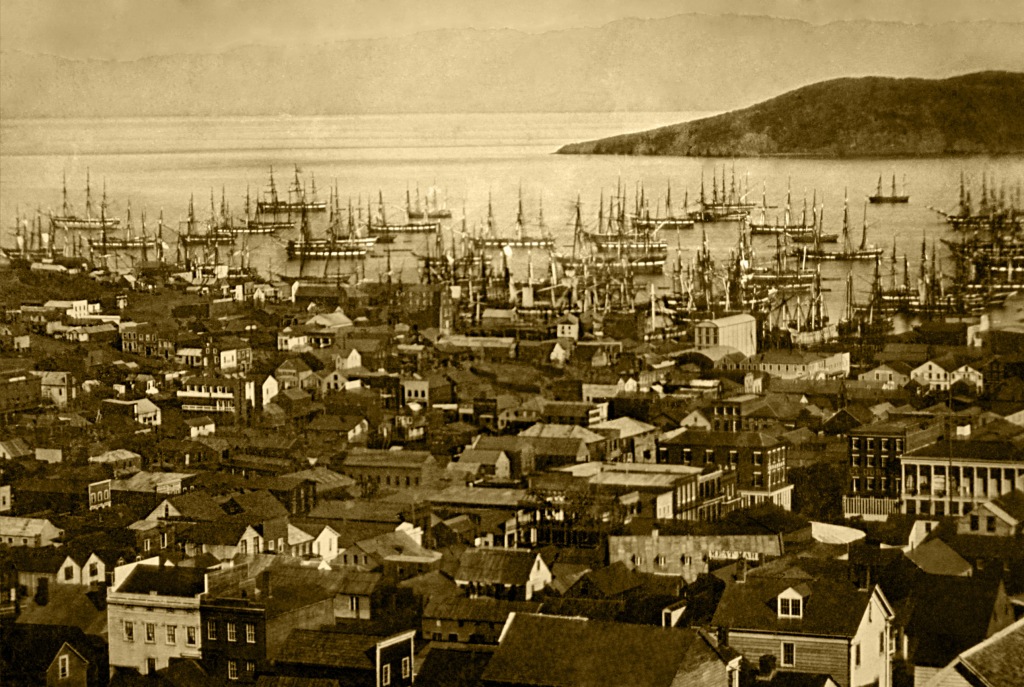
Finalmente, quatro meses depois de deixar Nova York, o navio chegou a São Francisco em 15 de novembro de 1856. Mary Ann assumiu o comando e guiou o navio até o cais. No total, ela ficou sozinha no comando do navio por 56 dias.
Os espectadores no porto ficaram surpresos. O segundo oficial do navio gritou por ajuda para colocar o capitão Patten em uma maca. O orgulhoso capitão parecia magro e frágil, com um rosto pálido e cinzento. Os estivadores ficaram ainda mais curiosos com a presença de uma jovem de aparência delicada entre a tripulação de homens, dando ordens. A julgar pela redondeza de sua barriga, era evidente que ela estava grávida de aproximadamente seis meses. Apesar disso, ela permaneceu ao lado do marido enquanto ele era transportado para o hospital. Logo, a notícia se espalhou de boca em boca por toda São Francisco.
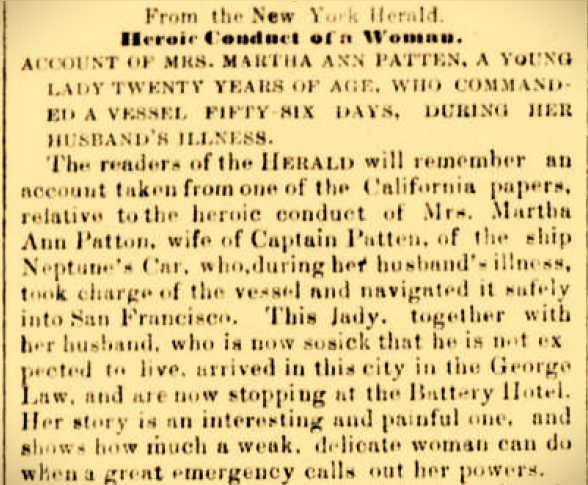
Quando a imprensa soube como ela conseguiu comandar um poderoso Clipper, cuidar do marido, proteger o navio e a carga e controlar o primeiro oficial desonesto, tudo isso aos 19 anos e grávida, Mary Ann Patten se tornou uma celebridade instantânea. Jornal após jornal a entrevistou..
Jornais de todo o mundo, incluindo aqueles tão distantes como Londres, começaram a divulgar esta notícia. Jornalistas ansiosos começaram a juntar as peças da história triste, mas inspiradora. Enquanto isso, ela descobriu que seu barco havia ficado em segundo lugar na “Corrida dos Clippers de 1856”, algo para o qual ela não estava preparada. Chegando a São Francisco, Ella Mary tornou-se uma sensação nacional.
Acontece que o capitão Joshua Patten era maçom e, para apoiá-lo durante sua doença, eles receberam assistência significativa do Templo Maçônico da Califórnia. Também receberam apoio da Maçonaria para retornar a bordo de um navio, o George Law, que os levaria a Nova York e depois a Boston.
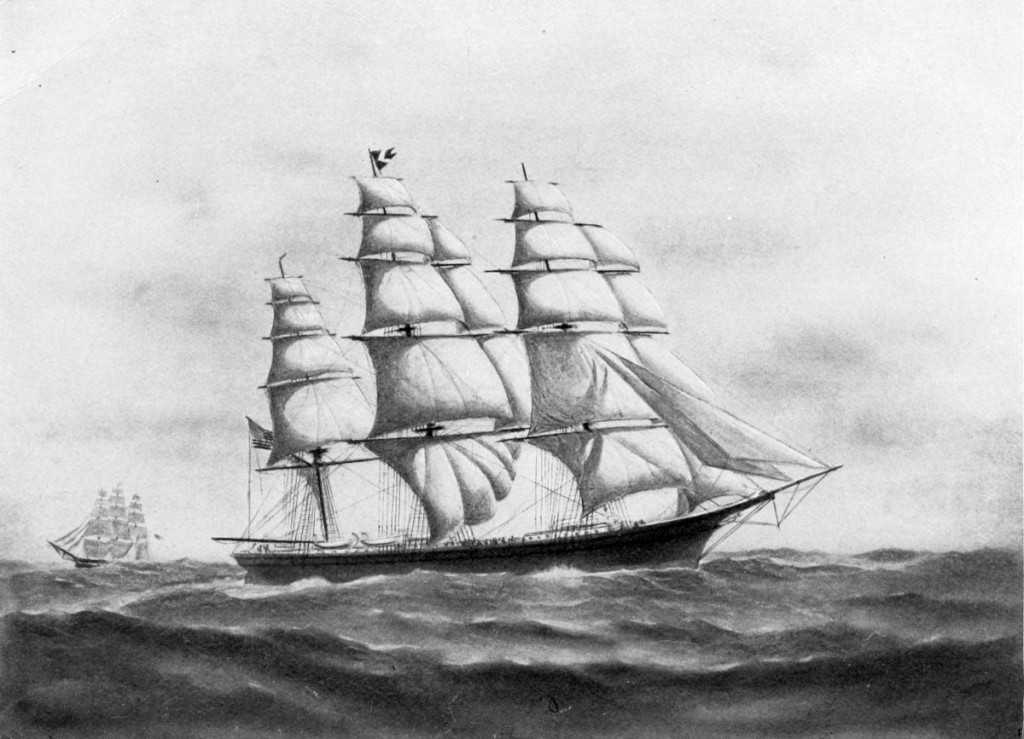
Em Nova York, um jornalista do New York Daily Tribune (página 5, 18/02/1857) comentou que o casal estava hospedado no Battery Hotel. Foi mencionado que Joshua foi carregado em uma liteira do navio para o hotel por seus irmãos Mason. E que seu estado era “delicado”. Tão delicado que o jornalista, sem qualquer sentido, afirmou que Mary Ann “em breve ficaria viúva”. Mesmo em conexão com a Maçonaria, onde Joshua Patten estava antes de vir para Boston, ele recebeu o apoio dos irmãos maçônicos.
Enquanto o casal voltou para casa, William Keeler nunca foi para a prisão ou foi executado. Ainda a bordo do Neptune’s Car, ele escapou com a ajuda de um companheiro e desapareceu. Ele deve ter mudado de nome e, quem sabe, se tornado um gigolô em uma taverna do Velho Oeste, ou um ladrão de cavalos, ou um agiota, etc.
O Fim Precoce de Uma Guerreiro do Mar
Depois de chegar a Boston e Chelsea, apesar da atenção da mídia, ela encontrou um problema com a empresa do marido. Embora Mary Ann estivesse grávida e seu marido estivesse muito doente, Foster & Nickerson recusou-se terminantemente a pagar a Joshua seu salário e bônus. Alegaram que ele havia entregue o navio a alguém “sem qualquer treinamento ou experiência”. Permaneceram teimosos até o fim e nunca pagaram um único centavo, apesar de o capitão claramente merecer.
Mary escreveu uma carta à seguradora, Atlantic Mutual Insurance Company, explicando o que havia acontecido durante a viagem. Foi somente depois de um protesto público que a empresa concedeu a Joshua um bônus de US$ 5.000 e mostrou sua magnanimidade enviando US$ 1.000 para Mary Ann. Prêmio do ano. De qualquer forma, a carga que ele salvou valia 350 mil dólares.
Os jornalistas que acompanharam a história não ficaram impressionados com a “generosidade”. O New York Daily Tribune de 1º de abril de 1857 proclamou sarcasticamente: “Mil dólares por uma heroína… das mãos caridosas e agradecidas de oito companhias de seguros com capitais grandes o suficiente para segurar uma marinha…”
Sendo uma mulher educada do século 19, ela escreveu-lhes para agradecer sinceramente e pediu-lhes que também agradecessem aos membros da tripulação do Neptune’s Car que apoiaram ela e seu marido. E como mulher vitoriana, ela minimizou o seu próprio papel, afirmando que estava “apenas cumprindo os seus deveres de esposa por causa do marido”.
Um jornal de Boston lançou uma campanha para cobrir as despesas dos cuidados médicos contínuos de Joshua, bem como o próximo nascimento de seu primeiro filho. Mary Ann recebeu US$ 1.399.
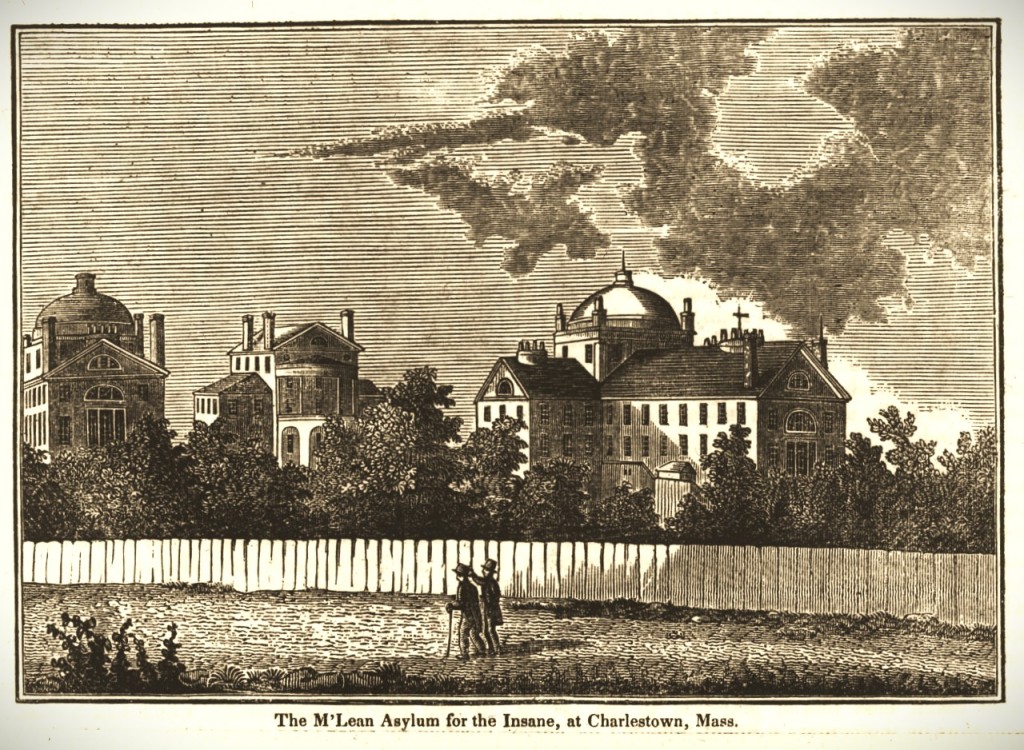
Conforme comentado por um jornalista do New York Daily Tribune, Mary Ann logo ficou viúva. Joshua morreu em 26 de julho de 1857, aos 30 anos, no Asilo McLean, em Boston. Ele morreu cego, surdo e completamente inconsciente. Ele nem sabia que Mary Ann havia dado à luz seu filho, Joshua Patten Jr. No dia de sua morte, as bandeiras marítimas do porto tremulavam a meio mastro e os sinos das igrejas dobravam em sua homenagem.
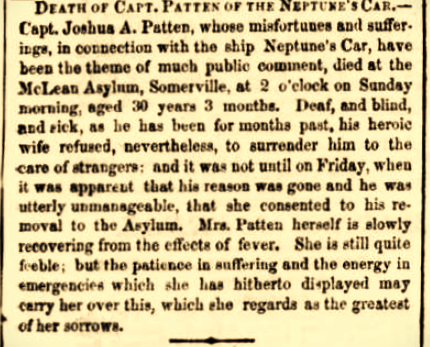
Mas os problemas não terminaram. Pouco depois, o pai de Mary, que também era marinheiro, se perdeu no mar.
Infelizmente, Mary Ann Brown Patten nunca se recuperou totalmente da intensa experiência. Em 1860, ela também contraiu tuberculose. Em 17 de março de 1861, com a idade de 23 anos, 11 meses e 11 dias, ela morreu. Ela está enterrada em Boston ao lado do marido.

Memória
No Brasil, existe a ideia de que os Estados Unidos são uma nação que “valoriza muito a sua história”, que o povo de lá “é muito patriótico” e que “dá muito valor aos seus símbolos e heróis”. Porém, no caso de Mary Ann Patten, não é assim!
Hoje, apesar da importância dos acontecimentos de 1856, esta mulher é lembrada principalmente por ser reconhecida como a primeira mulher a comandar um navio mercante nos Estados Unidos. Em homenagem a ela, um hospital chamado Patten Health Service Clinic, da Marinha Mercante, leva seu nome e fica localizado em King’s Point, Nova York. E isso aconteceu mais de 100 anos após sua realização.

Pelo que pesquisei, nenhum navio americano leva o nome dela. Mesmo durante a Segunda Guerra Mundial, quando os Estados Unidos construíram uma imensa frota de navios de carga, conhecidos como “Liberty Ships”, com um total surpreendente de 2.710 navios concluídos, nenhum deles foi nomeado em homenagem a esta mulher. Vários desses navios receberam nomes de mulheres. Posso estar errado, mas não encontrei nenhuma referência à vida dela sendo tema de um filme ou documentário de Hollywood. Sei que ela serviu de inspiração para um romance, mas não encontrei obra literária mais abrangente sobre sua vida.
Mas o que aconteceu com ela em 1856 é algo que não deve ser esquecido.
